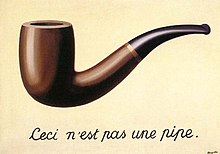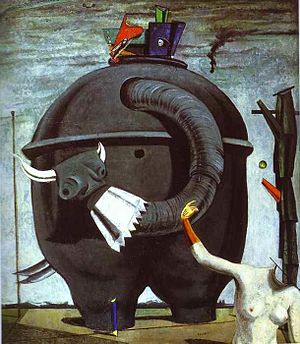Surrealism
(1920s)
- "super real" or "beyond reality"
- started in Paris by a small group of artists who sought to channel the unconscious as a means to unlock the power of the imagination.
- rejecting rationalism and literary realism, and influenced by Sigmund Freud, the Surrealists believed the conscious mind repressed the power of the imagination.
- aim was to "resolve the previously contradictory conditions of dream and reality", and believed that the psyche had the power to reveal the contradictions in life.
- characterized by
- unnerving, illogical scenes with irrational conception of time and space
- dream-like setting and strange creatures
- juxtaposition of unrelated themes and objects
- distortion of everyday objects, by transformation of familiar objects to unusual, unfamiliar and disturbing, or by metamorphosis
- allowing the unconscious to express itself.
- dislocation of objects in bizarre ways
- The Surrealist impulse is to tap the subconscious mind
- The paranoiac-critical methods: analyzing the shapes rocks and landscapes and see different objects from them which do not exist
- Double-image paintings: objects or creatures take the same form but in two different contexts and can be interpreted differently (e.g. Bust of Voltaire is hidden in Slave market)
- main figures - Salvador Dalí, Man Ray, Max Ernst
- Dali's common themes: clocks, ants, eggs, crotchets
- questioned the very basis of rationality, logicality, and society itself
- Surrealism officially began in 1924, when André Breton wrote Le Manifeste du Surréalisme and defined Surrealism as "Psychic automatism in its pure state, by which one proposes to express - verbally, by means of the written word, or in any other manner - the actual functioning of thought." He suggested that artists should seek access to their unconscious mind in order to make art inspired by this realm.
The Persistence of Memory by Dali Sleep by Dali
Slave Market by Dali, 1940 Soft Construction with Boiled Beans by Dali, 1936
http://en.wikipedia.com
http://www.artyfactory.com/
http://www.arthistoryarchive.com/








